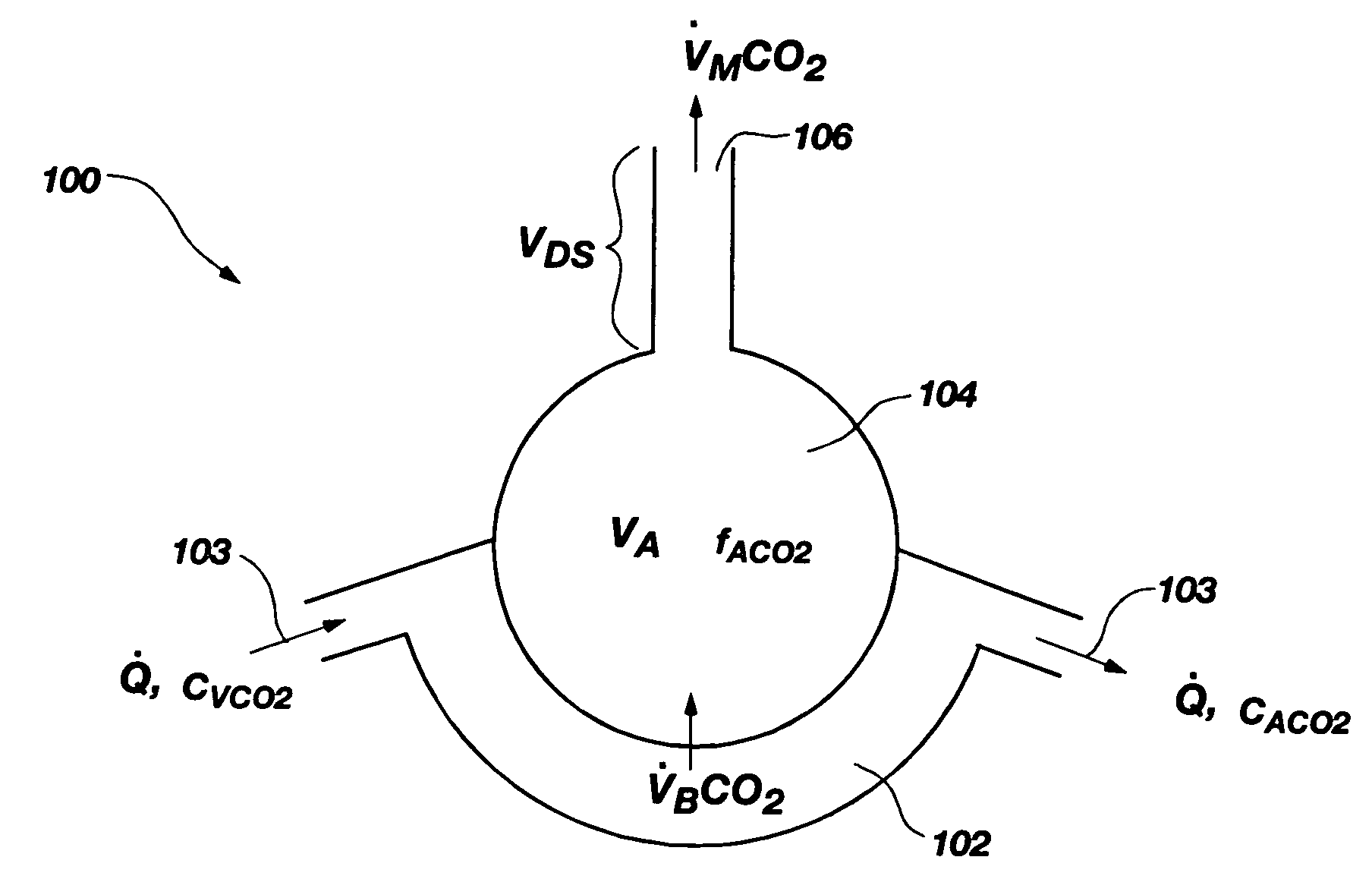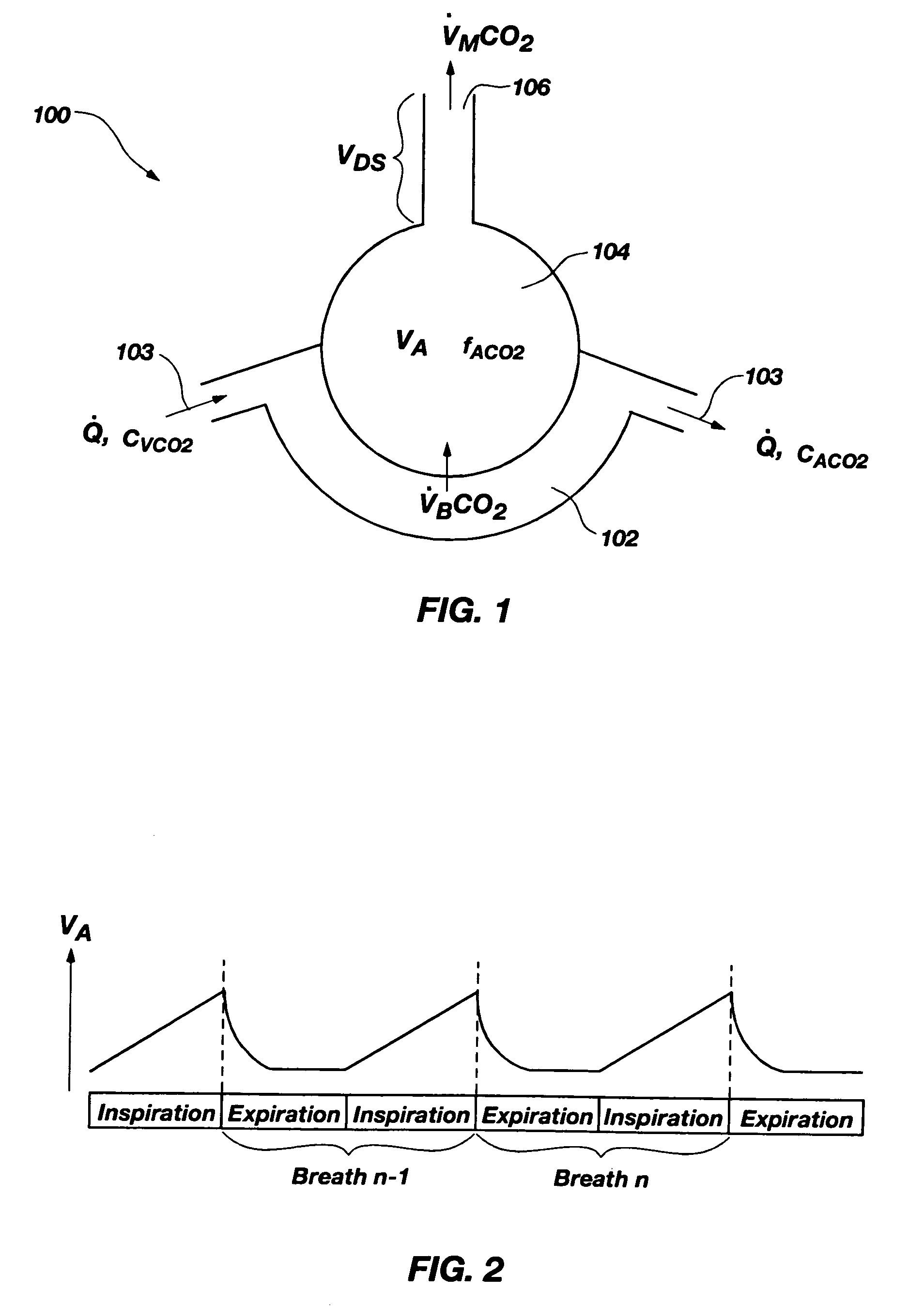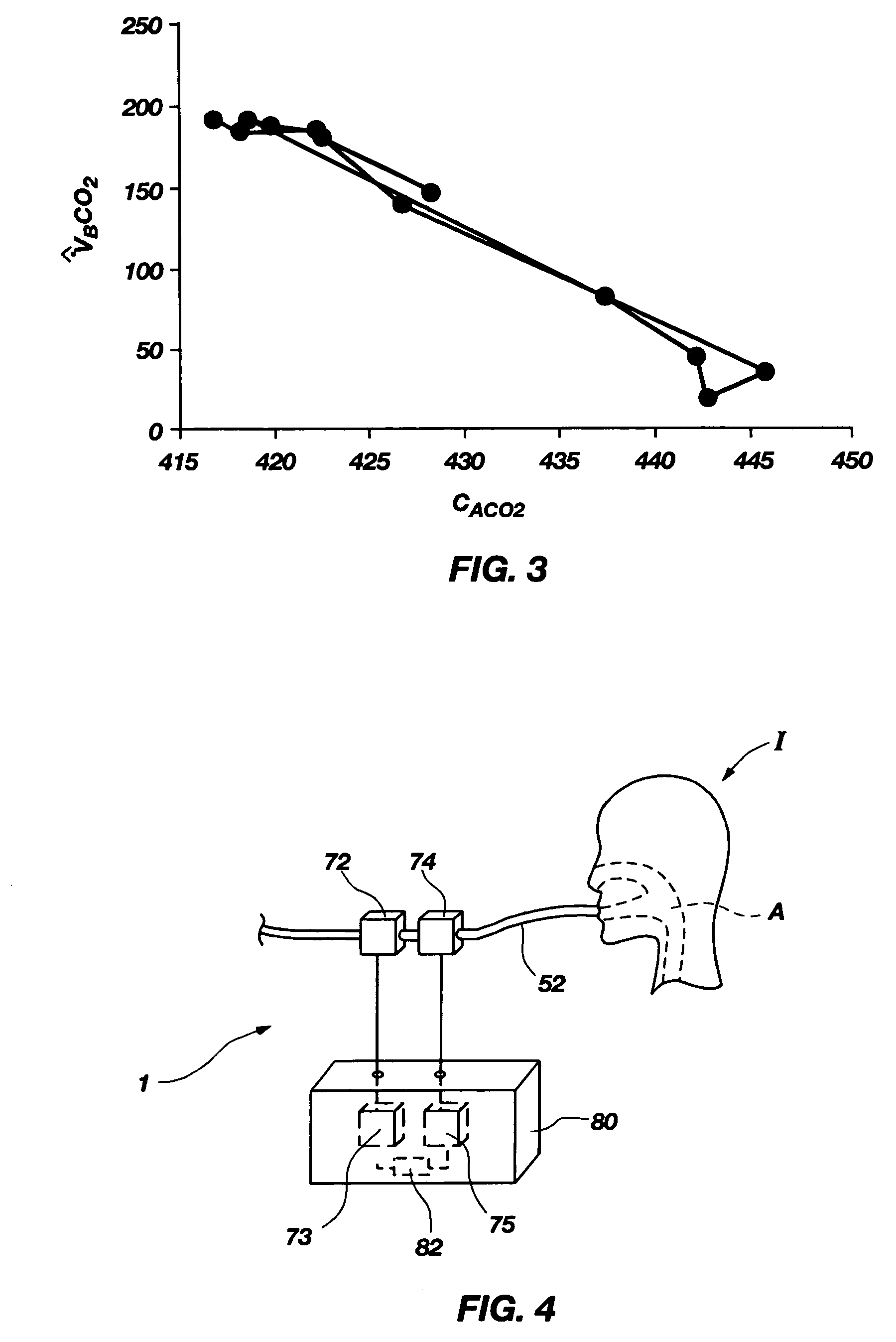Noninvasive effective lung volume estimation
a technology of effective lung volume and non-invasive, applied in the field of non-invasive effective lung volume estimation, can solve the problems of reducing psub>ao2 /sub>and, cumbersome equipment, mismatch between ventilation, etc., and achieve the effect of minimal invasiveness
- Summary
- Abstract
- Description
- Claims
- Application Information
AI Technical Summary
Benefits of technology
Problems solved by technology
Method used
Image
Examples
example
[0088]Different effective FRC values were achieved by incrementally advancing an especially long endotracheal tube from an initial, normal position to a small distance within the bronchial tree of an anesthetized pig (at time=15:26) and, twenty-one minutes later (at time=15:47) to a position further within the bronchial tree. By ventilating only parts of the lung, the effective FRC was reduced with each advancement of the endotracheal tube.
[0089]ELV was calculated for various breaths using equation (18). ELV values that were calculated when a sufficient fACO2(n)−fACO2(n−1) threshold was present and during certain breaths (e.g., the second breath into rebreathing, the first breath of recovery, etc.) were considered valid and are included as data points in the graph of FIG. 5. Notably, the plotted data points represent ELV minus inspiratory tidal volume. ELV values that were calculated from data obtained during transition from normal breathing into rebreathing are shown as diamond-sha...
PUM
 Login to View More
Login to View More Abstract
Description
Claims
Application Information
 Login to View More
Login to View More - R&D
- Intellectual Property
- Life Sciences
- Materials
- Tech Scout
- Unparalleled Data Quality
- Higher Quality Content
- 60% Fewer Hallucinations
Browse by: Latest US Patents, China's latest patents, Technical Efficacy Thesaurus, Application Domain, Technology Topic, Popular Technical Reports.
© 2025 PatSnap. All rights reserved.Legal|Privacy policy|Modern Slavery Act Transparency Statement|Sitemap|About US| Contact US: help@patsnap.com



